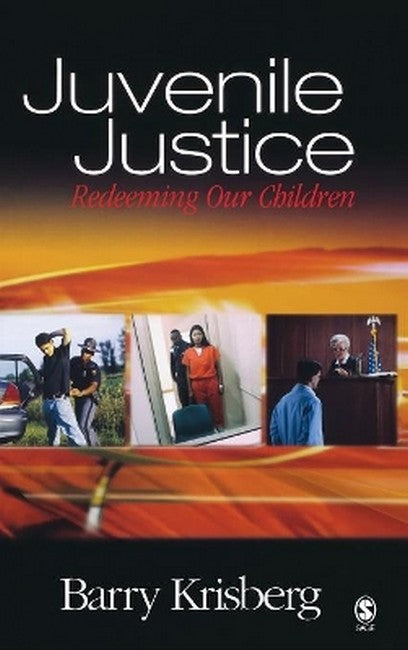Barry Krisberg (PhD, University of Pennsylvania) is a Senior Fellow at the Chief Justice Earl Warren Institute on Law and Social Policy at the University of California, Berkeley Law School and a Lecturer in Residence at in the Juris Doctor Program at Berkeley Law. He is known nationally for his research and expertise on juvenile justice and corrections issues and is often called upon as a resource for professionals, foundations, and the media. Dr. Krisberg was appointed by the legislature to serve on the California Blue Ribbon Commission on Inmate Population Management. Past president and fellow of the Western Society of Criminology, he was Chair of the California Attorney General's Research Advisory Committee. Dr. Krisberg was appointed to chair an Expert Panel to investigate the conditions in the California youth prisons. His many books and articles include Juvenile Justice and Continuing the Struggle for Justice, both published by SAGE.
Request Academic Copy
Please copy the ISBN for submitting review copy form
Description
Preface Chapter 1: Juvenile Justice: Myths and Realities Summary Review Questions Chapter 2: Data Sources Understanding the Contours of Juvenile Crime Juvenile Court Statistics Juveniles Taken Into Custody Self-Reported Delinquency Surveys Qualitative Data Sources Summary Review Questions Chapter 3: The Historical Legacy of Juvenile Justice The House of Refuge (1825-1860) The Growth of Institutionalization and the Child Savers (1850-1890) Juvenile Delinquency and the Progressive Era The Child Guidance Clinic Movement The Chicago Area Project The Mobilization for Youth Institutional Change and Community-Based Corrections Changes in Juvenile Court Law The Emergence of a Conservative Agenda for Juvenile Justice Summary Review Questions Chapter 4: The Current Juvenile Justice System The Flow of Cases Through the Juvenile Justice System Summary Review Questions Chapter 5: Juvenile Justice and the American Dilemma Disproportionate Minority Representation and the Juvenile Justice Process Youths of Color in Confinement: The National Picture and State Differences Youths in Prison Beyond Black and White Donde Esta la Justicia? Asian Americans and Pacific Islanders: The Burden of Invisibility Native American Youths: Outsiders in Their Own Land In Search of Answers Summary Review Questions Chapter 6: Young Women and the Juvenile Justice System Gender-Specific Juvenile Justice Services What Works for At-Risk Young Women Other Promising Gender-Specific Approaches Conclusions Summary Review Questions Chapter 7: Is There a Science of Prevention? The Politics of Prevention Building a Foundation for Prevention Programming Implementing Effective Community Prevention Models Interrupting the Cycle of Violence The Cost-Effectiveness of Prevention Is There a Science of Prevention? Summary Review Questions Chapter 8: What Works in Juvenile Justice Summaries of Program Evaluations and Meta-Analyses A Graduated System of Sanctions and Interventions Summary Review Questions Chapter 9: The Gang Busters: Does Getting Tough Reduce Youth Crime? The Gang Busters The Impact of Juvenile Corrections The Boot Camp Frenzy Transferring Juveniles to the Criminal Justice System Summary Review Questions Chapter 10: Redeeming Our Children Evolving Standards of Juvenile Justice Contemporary Standards of Juvenile Justice Seeking Balance and Restorative Justice The Comprehensive Strategy for Serious, Violent, and Chronic Juvenile Offenders Our Children and Other People's Children Summary Review Questions References Index About the Author

